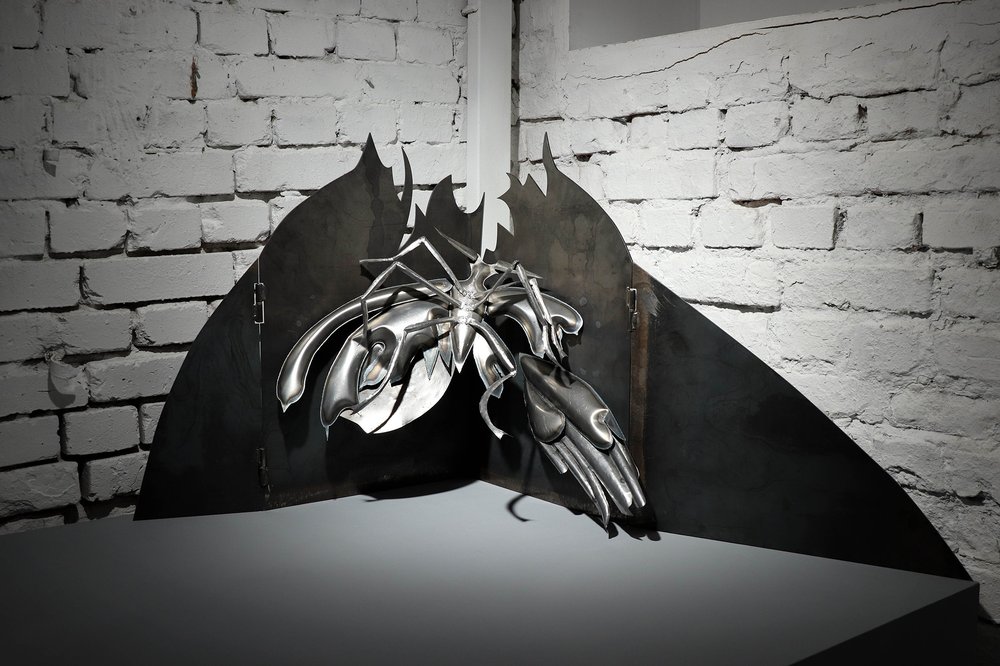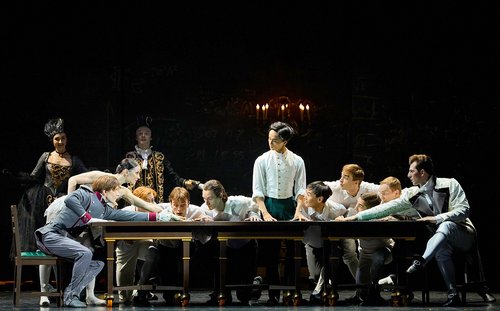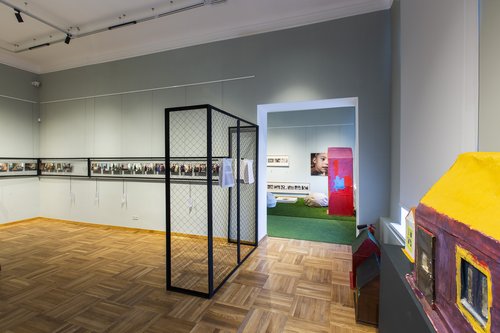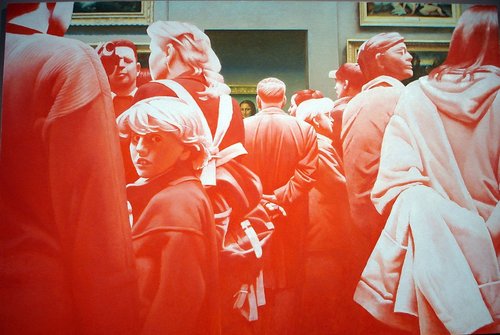Life among Insects

Vera Shirdina. Remember Your Name. Exhibition view. Nizhny Novgorod, 2024. Courtesy of Terminal A Centre for Contemporary Art
Post-millennial artist Vera Shirdina has opened a new solo exhibition ‘Remember Your Name’ at the Terminal A Centre for Contemporary Art in Nizhny Novgorod. Fixated on moths, Shirdina is among a growing number of Russian artists who are finding fresh relevancy in the image of insects.
Back in 2021 ‘Na Shabolovke’ a contemporary art gallery in Moscow staged an exhibition called ‘Beetles and Caterpillars. Insect Culture of the 1920s–1930s’ which was curated by Nadia Plungian and Alexandra Selivanova. Using materials drawn from across early Soviet visual culture and propaganda, fine art and literature, their goal was to systematise the entomological iconography of the early Soviet era. They also included images of spiders and worms, which in the biological sense are not strictly speaking insects, although widely considered to ‘bugs’. Flies and lice as inevitable companions of devastation, famine and epidemics after World War I and the Civil War; locusts, caterpillars and spiders, which became synonymous with repressed groups on the fringes of society (often seen as ‘enemies of the people’, or ‘saboteurs’); colourful literary characters, such as Korney Chukovsky's Tsokotukha fly or Nikolai Oleinikov's antisemitic beetle, are deeply connected with the language of the epoch. Some images at the time, such as Chukovsky's Tarakanishche (The Great Cockroach), were particularly ambiguous – the author might have been criticising the Tsar and the White generals, or the Soviet party leaders. And as Stalin's grip on power in the USSR tightened and Hitler's power increased in Germany, this tale which was written in the early 1920s became more and more ambiguous with every year that passed. In underground circles of the time, most notably among the Obériuts, a group of absurdist poets, insects became a marker of modernist self-reflection and philosophical metaphors - for example, they signified existential dread in the essayistic work of Leonid Lipavsky.
Again today, artists are turning to the image of insects, also in a broad rather than entomological sense. Perhaps in part even in a similar way to their predecessors a century ago. Plungian and Selivanova’s exhibition featured Alexander Rodchenko's (1891–1956) sketch for a production of Vladimir Mayakovsky's ‘The Bed-Bug’ where a man in a gas mask was likened to an insect. A similar approach was seen in Anton Kuznetsov's (b. 1973) World War I-themed exhibition ‘Insecticide’ staged at Moscow's Triumph Gallery in 2014. Soldiers in chemical protection masks became beetles, uniforms became chitin, and aeroplanes became dragonflies; locusts lined up in marching formation, spiders wove barbed wire, and soul revellers flew out of the bodies of dead soldiers in the infirmary. The unstoppable genocide of one species by another perfectly captured the atmosphere of a world war when weapons of mass destruction like war gases were used, shocking a humanity that had hitherto been confident of its civilisation. Ten years later, in the autumn of 2024, the same gallery hosted a joint exhibition of Anton Kuznetsov and Maria Safronova (b. 1979), ‘The Apiarian Zone’, in which they took inspiration from a terrible image – the disappearance of honey-bearing insects. The life of bees became for the artists a metaphor for the dark sides of human society. For example, ruthless methods of honey extraction, especially industrial ones, when honeycombs are simply mechanically cut, were read by Kuznetsov and Safronova as repression and war. Bee families, clans and hives were likened to countries and nations. The opaque management of some human groups by others was paralleled by the skill of getting useful products from insects and not being stung by them (even the image of a secret society of beekeepers emerged). And the hypothetical world where bees disappeared was read as a post-apocalyptic land after the collapse of human civilisation. One of the most frightening objects in the exhibition is a mountain of dead insects, Safronova's installation ‘Bees That Did Not Make It to the Hive’ (2024). It was countered by her work ‘Earth’ (2024), a spinning, buzzing globe with honeycombs sticking out of it, a symbol of the rebirth of life on the planet.
Following Kuznetsov and Safronova’s exhibitions, Kazan artist Zukhra Salakhova (b. 1997) opened a solo exhibition at Triumph called ‘Wardrobe’. Among the many images presented there – of galloping horses or ancient Egyptians sailing in boats – it was ants that stood out. ‟I basically like to take someone small and seemingly insignificant as a character, because it is these small units that run the world”. Salakhova continues: ‟I address those creatures that look vulnerable, but in reality are strong because of the sum total of their collective mass”. This exhibition is the first time the artist has used the image of ants in her work, but she promises that in the future they will become her regular characters. What is important to Salakhova is how these insects resemble humans. She is struck by how clearly the anthill functions and how efficiently, even somewhat mechanistically, the roles are distributed inside it. However, the artist also hints at the secret mechanisms hidden behind the external orderliness. In the embroidered objects ‘Musical Composition 4’ (2024), Salakhova depicts a rat catcher who has enchanted the rodents with the sound of a piper, so they begin to turn into ants. This is not surprising, as the texts that inspired the exhibition include the Metamorphoses by the ancient Roman poet Ovid.
Nadezhda Petrova (b. 1985), who lives in Moscow has an exceptionally unusual technique where she creates one-and-a-half and two-metre lace objects in the form of flies, mosquitoes, cockroaches and moths. ‟I like the contrasts that arise at the intersection of my medium and the theme of insects,” says the artist. ‟How small becomes big, and hard and chitinous becomes soft and transparent. On the one hand, I deliberately enlarge the insects, but on the other hand, I rasterise them with squares and holes in the lace.” One of Petrova's best-known works, remembered for the first edition of the Textile Biennale (2024) at the Ground-Solyanka art gallery in Moscow, is ‘Mosquito’ from the Toxic Lace series (2021–2022). In the technique chosen by the artist, it looks particularly ambiguous: thanks to its long thin legs and mesh body, the object resembles a spider's web. The artist works with insects as a metaphor for different psychological states in people: ‟I am interested in how these small creatures who are so unlike us cause so many negative emotions, how they become a symbol of fear, squeamishness, disgust, anger. In the work ‘The Only Legitimate Fear. Flies’ (2022), I take up the theme of psychological displacement and the replacement of big, global fears with a safe, legitimate fear – insectophobia. Moths and cockroaches, the heroes of my other series, are responsible for personal and collective states of anger, rage, humility, and acceptance.” Petrova's lace insects can now be seen at Moscow's Winzavod Centre, where the artist has become a resident of Open Studios, a platform for young artists.
Insects also appear in new post-digital painting. For example, images of winged creatures appear in the paintings of Kaliningrad artist Gleb Trishkin (b. 2005). A moth sits on the face of an ancient Egyptian sculpture (Untitled, 2023); there is an imprint of the image of a butterfly on a chair, which in turn shows a face (Paradise Bird Was Lying Dead in Front of Me, 2023). The same is true for works on paper: drawings by Muscovite Alexey Bevza (b. 1993) often include dragonflies, probably originally taken from samurai armour ornaments but, like Kuznetsov's, transformed into planes. In one of the artist's works, a fantastic robotic tetrapod appears, clearly inspired by the Tyranids, a race of insect invaders from the game Warhammer, or similar creatures from the cult film Star Troopers.
Nizhny Novgorod artist Vera Shirdina (b. 2001) recalls how the idea for the current exhibition at Terminal A came about: ‟I suggested to my colleague Yana Serobabina that we try minting on thin sheets of steel and aluminium, not really understanding how we would do it. At the beginning we only got dots and scratches. Yana wrote the phrase ‘forgotten view’ with dots, where the word ‘view’ was on the other side of the sheet. She was supposed to complete the composition with the word ‘art’, but, instead, scratched out a butterfly. For a while I walked around thinking about this butterfly, deformed Yana's drawing and translated it into a wire construction. I recalled the concept of mimicry from the 1930s. I began to unwind this concept, juxtaposing it with current views. Later, the theory of evolution receded into the background, and the image of the winged creature was accidentally overlaid with ideas from other fields.” As a result, the ‘Remembering Your Name’ exhibition features etched metal moths. ‟In the process of production, they began to acquire parts of the bodies of cockroaches, spiders, flies, etc.” explains Shirdina. ‟True, all of this is eaten away by oxidising agents, sometimes turning into an abstract stain, and all the details are gone.” The artist used to be actively engaged in street art, and therefore these kind of processes are familiar: ‟We observe it on monuments and other metal constructions in the open environment, where they are not protected from the elements, and the results appear after years, sometimes decades. My moths, on the other hand, under completely different conditions, change their appearance in an hour, a day or a month.” These transformations at the exhibition will affect not only insects: for example, a group of flower-shaped objects will take on the outlines of human faces.
Today insects have become a popular image among Russian artists. They signify the mysteries of human society, the death and rebirth of life, as in Trishkin, Kuznetsov and Safronova; the strength of the weak, as in Salakhova; mental states, as in Petrova; metamorphosis and fluidity of matter, as in Bevza, Kuznetsov, Salakhova and Shirdina.
Vera Shirdina. Remember Your Name
Nizhny Novgorod, Russia
22 December 2024 – 9 February 2025
















